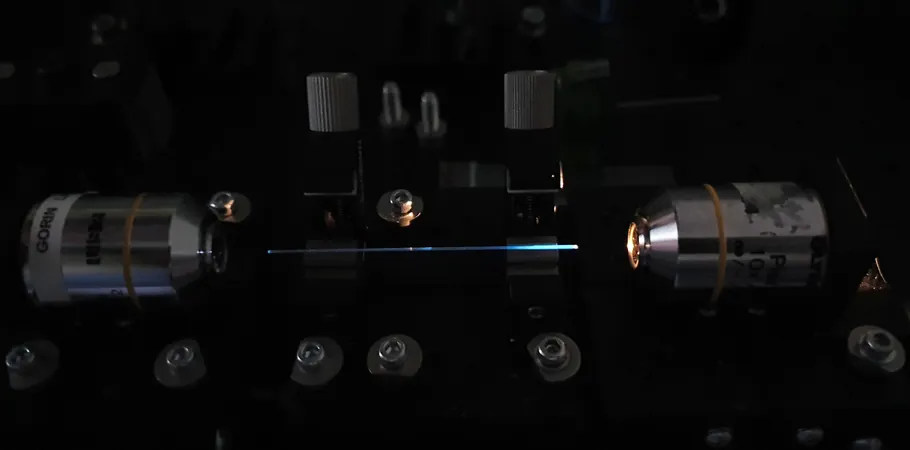
Revolutionary Mini Lantern Could Transform Medical Imaging Inside Blood Vessels
2025-05-12
Author: Li
A Breakthrough in Medical Probes
Researchers at Skoltech have developed a groundbreaking microstructure using modified glass fiber, designed to act as a miniature lantern for medical probes delving into the depths of blood vessels and other tubular parts of the body. This innovative approach could pave the way for enhanced medical imaging and treatment.
How It Works: The Science Behind the Microlantern
Published in the prestigious journal Annalen der Physik, this microlantern consists of a hollow-core optical fiber, resembling a tiny glass tube. Inside, layers of polymer and specially designed nanoparticles are strategically applied. The ends of this fiber are sealed with polymer membranes, creating an efficient light-emitting system.
Transforming Light for Treatment
By adding mirrors to the membranes, the structure can generate targeted laser light. This feature could be harnessed in photodynamic therapy to effectively eliminate tumors treated with specific dyes, showcasing the potential for significant advancements in cancer treatment.
Exploring Hard-to-Reach Areas
Glass fiber endoscopic probes are emerging as a game changer for accessing difficult-to-reach internal areas for both diagnostics and therapy. The challenge has always been how to equip the end of these probes with the necessary instruments without compromising functionality.
Innovative Solutions to Light Loss
The Skoltech team has made a decisive leap forward by minimizing light transmission losses—a common issue with similar technologies. Their microstructure is compact—just several centimeters long—with a precisely engineered 0.25 millimeter inner diameter.
The Role of Quantum Dots
The innovative aspect of this development lies in the use of quantum dots, which serve as the active medium for the laser. Heat treatment allows tighter packing of these nanoparticles, effectively enhancing light output while reducing losses.
From Laser to Diffuse Light Source
The created system holds promise for generating optically pumped lasers with a wide range of operational wavelengths, from 0.3 to 6 micrometers. Moreover, if the membrane mirrors aren't applied, the system transforms into a diffuse light source, illuminating its environment in any direction—ideal for various diagnostic or therapeutic contexts.
Future Prospects: A Versatile Tool for Medicine
This versatile light-emitting microstructure opens new avenues for medical usage, from inspecting surfaces to visualizing deep tissue and even targeting pathological tissue removal through advanced photodynamic therapy. The future of blood vessel health monitoring just got a lot brighter.






 Brasil (PT)
Brasil (PT)
 Canada (EN)
Canada (EN)
 Chile (ES)
Chile (ES)
 Česko (CS)
Česko (CS)
 대한민국 (KO)
대한민국 (KO)
 España (ES)
España (ES)
 France (FR)
France (FR)
 Hong Kong (EN)
Hong Kong (EN)
 Italia (IT)
Italia (IT)
 日本 (JA)
日本 (JA)
 Magyarország (HU)
Magyarország (HU)
 Norge (NO)
Norge (NO)
 Polska (PL)
Polska (PL)
 Schweiz (DE)
Schweiz (DE)
 Singapore (EN)
Singapore (EN)
 Sverige (SV)
Sverige (SV)
 Suomi (FI)
Suomi (FI)
 Türkiye (TR)
Türkiye (TR)
 الإمارات العربية المتحدة (AR)
الإمارات العربية المتحدة (AR)